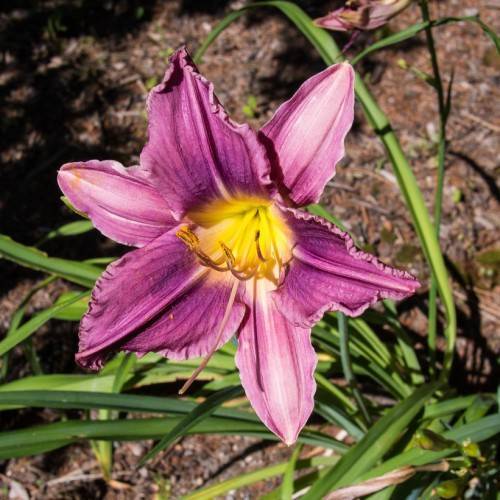
daylily
Hemerocallis 'Prairie Blue Eyes'
Cycle:
Herbaceous Perennial
Watering:
Average
Hardiness Zone:
3 - 9
Flowers:
Flowers
Sun:
Full sun,part shade
Leaf:
Yes
Growth Rate:
Low
Maintenance:
Low
Drought Tolerant:
Yes
Salt Tolerant:
Yes
Care Level:
Medium
watering
Daylilies (Hemerocallis 'Prairie Blue Eyes') should be watered deeply twice per week during the growing season. They prefer moist, well-draining soil, so watering should occur until the edges of the pot have water running out of the drainage holes. During particularly hot summer months, you may want to water this species a bit more frequently, allowing the top 2 inches of soil to dry at least partially between waterings. Watering should be discontinued in winter months when the plant goes dormant.
sunlight
Daylily (Hemerocallis 'Prairie Blue Eyes') requires full sun for optimal growth and blooms. It grows best when exposed to at least 6 hours of direct sunlight per day. However, this plant species can tolerate some afternoon shade as well. For best results, place the daylilies in a sunny location that receives full sun in the morning and some afternoon shade. This will ensure the plant is exposed to the most sunlight and optimal blooming.
pruning
Daylily (Hemerocallis 'Prairie Blue Eyes') should be pruned in early spring, before the flowering season. Pruning daylilies should be kept to a minimum - remove old foliage and spent blooms and shape as needed. Plant height and spread should be monitored to prevent them from becoming overgrown. Pruning helps to keep the plant healthy and will help to encourage new growth and blooms for the upcoming season.
